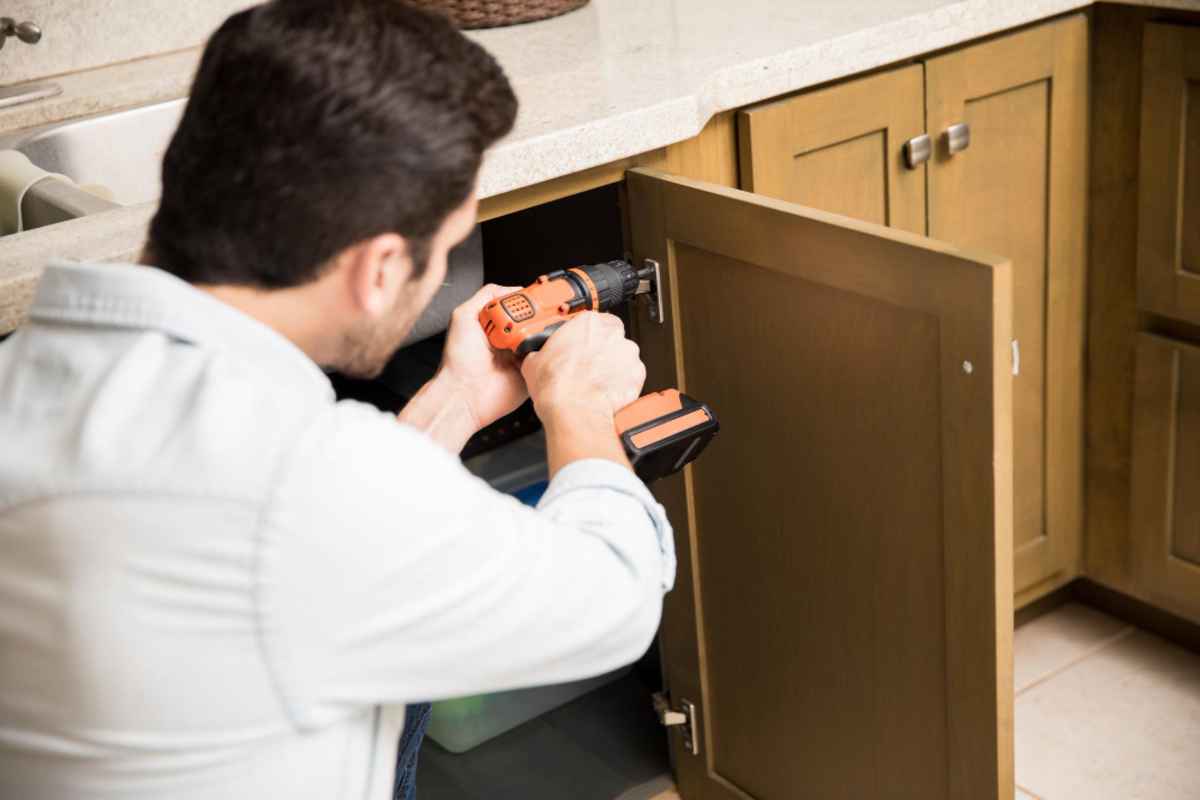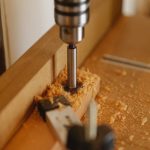Introduction
When it comes to optimizing kitchen storage and enhancing accessibility, installing a Lazy Susan cabinet is a smart choice. This rotating shelf system maximizes space utilization and makes it easier to reach items tucked away in the corners. In this detailed guide, we will walk you through the step-by-step process of installing a Lazy Susan cabinet in your kitchen.
I. Understanding the Lazy Susan Cabinet
What is a Lazy Susan Cabinet?
A Lazy Susan cabinet is a circular shelf system that rotates, allowing for easy access to items stored in the corners of kitchen cabinets. This innovative design eliminates the need to stretch and reach into the depths of the cabinet, making it an efficient solution for organizing and retrieving items.
Types of Lazy Susan Cabinets
There are various types of Lazy Susan cabinets, each catering to different storage needs. The most common types include the full-round Lazy Susan, D-shaped Lazy Susan, and kidney-shaped Lazy Susan. Understanding the specific type you have will be crucial for a successful installation.
II. Preparing for Installation
Tools and Materials Required
Before diving into the installation process, gather the necessary tools and materials:
Tools
- Screwdriver
- Power drill
- Measuring tape
- Pencil
- Level
Materials
- Lazy Susan cabinet kit
- Mounting hardware
- Wood screws
- Wood glue
- Plywood or MDF for shimming (if required)
Measuring and Marking
Accurate measurements are key to a seamless installation. Measure the cabinet dimensions and mark the center point. This will serve as the reference point for aligning the Lazy Susan.
III. Installing the Lazy Susan Cabinet
Step-by-Step Installation Guide
Step 1 – Empty the Cabinet
Remove all items from the cabinet to provide ample space for the installation process.
Step 2 – Position the Lazy Susan Base
Place the Lazy Susan base at the center point marked earlier. Ensure it is level and secure it using wood screws.
Step 3 – Mount the Lazy Susan Shelf
Attach the Lazy Susan shelf onto the base, following the manufacturer’s instructions. This usually involves securing it with screws.
Step 4 – Install the Lazy Susan Hardware
Mount the Lazy Susan hardware, which may include a rotating mechanism and support brackets. Use the provided screws and follow the manufacturer’s guidelines.
Step 5 – Check for Smooth Rotation
Test the rotation of the Lazy Susan to ensure it moves smoothly. Make any necessary adjustments to ensure proper alignment.
Step 6 – Secure Additional Support if Needed
For larger Lazy Susan cabinets or heavy loads, consider adding additional support. This can be achieved by installing support brackets or reinforcing the cabinet structure.
Troubleshooting Tips
1. Ensuring Proper Alignment
If the Lazy Susan doesn’t rotate smoothly, check for proper alignment. Adjust the placement of the base and shelf to ensure they are level and centered.
2. Addressing Wobbling Issues
If the Lazy Susan wobbles, double-check the installation for stability. Ensure all screws are tightly secured, and consider using shims to level the base.
IV. Finalizing the Installation
Applying the Finishing Touches
1. Reorganize and Optimize Storage
Once the Lazy Susan is installed, take the opportunity to reorganize your kitchen items. Utilize the rotating shelves to optimize storage and make items more accessible.
2. Maintain and Lubricate
To ensure continued smooth rotation, periodically check and lubricate the Lazy Susan’s moving parts. This simple maintenance step can prolong the life of the cabinet.
V. Customizing Your Lazy Susan Cabinet
Personalizing Your Lazy Susan
1. Choosing the Right Lazy Susan for Your Needs
Lazy Susans come in various designs, materials, and sizes. Consider your kitchen layout and storage requirements when selecting a Lazy Susan. For instance, if you have a corner cabinet with a tight space, a D-shaped Lazy Susan might be more suitable.
2. Adding Dividers and Inserts
Enhance the functionality of your Lazy Susan by incorporating dividers or inserts. These additions can help you organize specific items, preventing them from jostling during rotation. Dividers also make it easier to locate and access items quickly.
3. Opting for Pull-Out Lazy Susans
For even more convenience, you can choose a pull-out Lazy Susan. This design allows you to extend the shelves beyond the cabinet, providing a clear view and easy access to stored items.
VI. Troubleshooting and Maintenance Tips
Troubleshooting Common Issues
1. Addressing Noise Issues
If your Lazy Susan produces squeaking or grinding noises during rotation, consider applying a silicone-based lubricant to the moving parts. This simple step can significantly reduce friction and noise.
2. Dealing with Limited Rotation
In some cases, a Lazy Susan may not rotate fully due to obstructions or misalignment. Check for any items blocking the rotation path and ensure that the installation is level and centered.
3. Fixing Loose Hardware
Over time, the screws and hardware of your Lazy Susan may loosen. Periodically check and tighten any loose screws to maintain stability and prevent wobbling.
Routine Maintenance for Longevity
1. Cleaning the Lazy Susan
Regularly clean your Lazy Susan to prevent dust and debris buildup. Wipe down the surfaces, including the rotating mechanism, with a damp cloth. Avoid using harsh chemicals that may damage the materials.
2. Inspecting for Wear and Tear
Keep an eye out for signs of wear and tear, such as damaged shelves or hardware. Promptly address any issues to prevent further damage and maintain the optimal functionality of your Lazy Susan.
3. Lubricating Moving Parts
Apply lubricant to the rotating mechanism at least once a year, or as needed. This helps reduce friction, ensuring smooth and effortless rotation. Refer to the manufacturer’s guidelines for recommended lubricants.
VII. Additional Tips for a Successful Installation
1. Enlist a Helper
Installing a Lazy Susan cabinet can be a two-person job, especially when handling larger or heavier units. Enlist the help of a friend or family member to make the installation process smoother and more efficient.
2. Double-Check Measurements
Before drilling or securing any components, double-check all measurements. Accuracy is crucial to ensure that the Lazy Susan fits seamlessly into your cabinet space.
3. Follow Manufacturer’s Instructions
Always refer to the manufacturer’s instructions provided with your Lazy Susan cabinet kit. These guidelines are tailored to the specific model you have, and following them will ensure a successful installation.
4. Consider Professional Installation
If you’re unsure about your DIY skills or dealing with a complex kitchen layout, consider hiring a professional for the installation. They have the expertise to handle challenging scenarios and ensure a secure and reliable setup.
Conclusion
Installing a Lazy Susan cabinet is a practical and efficient way to enhance the functionality of your kitchen. By following this comprehensive guide, you can successfully install a Lazy Susan cabinet, optimizing your storage space and simplifying your daily kitchen routines. Remember to refer back to this guide whenever you need a refresher on the installation process. Happy organizing!








